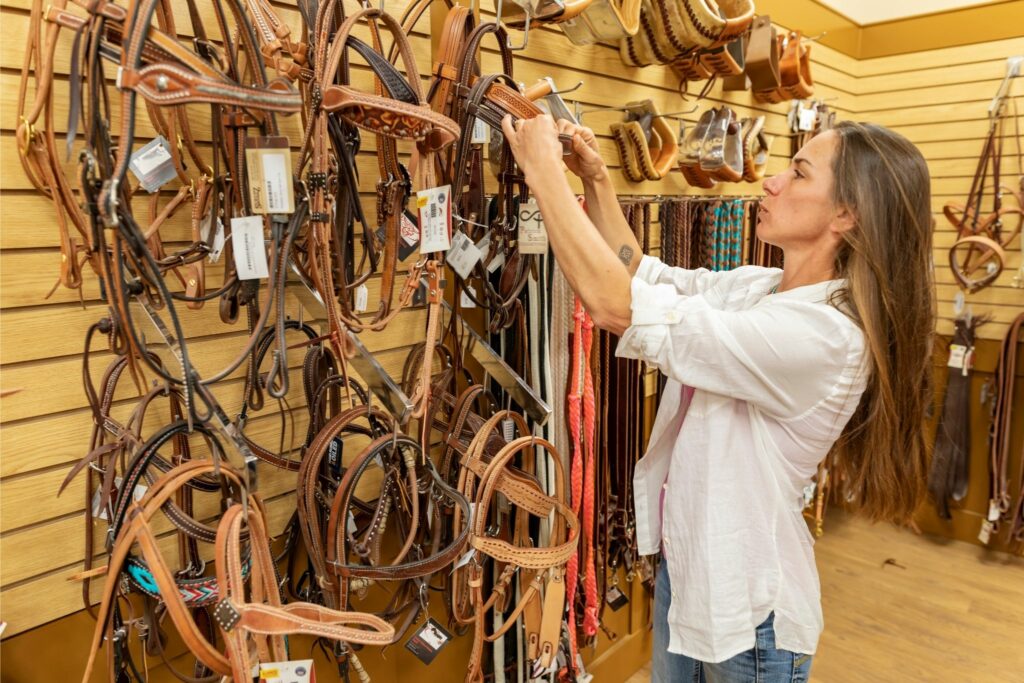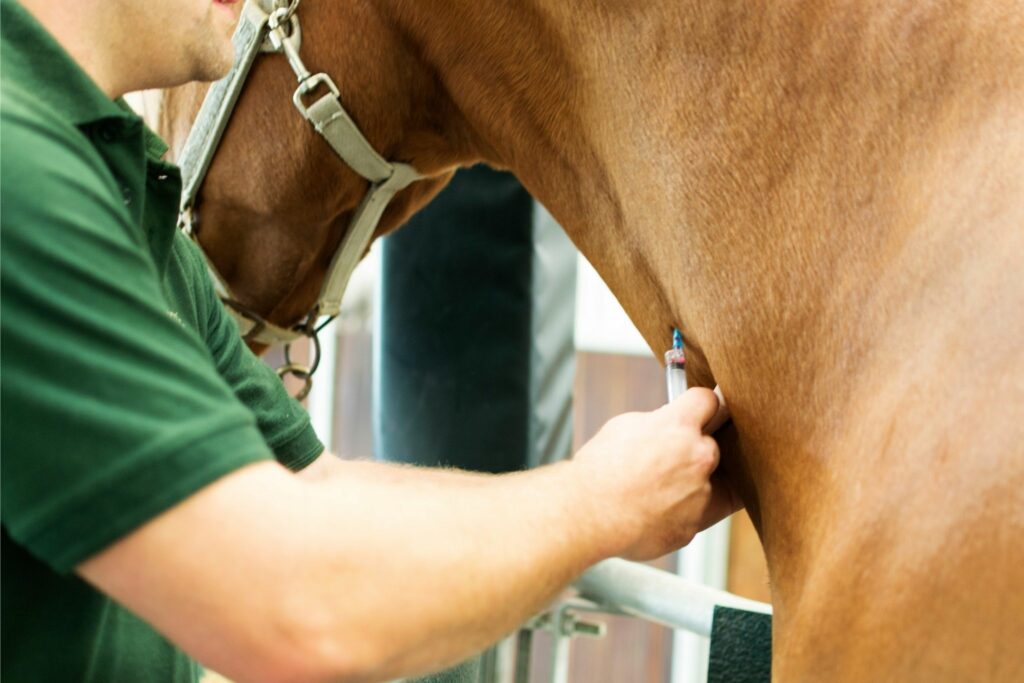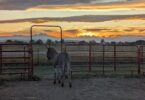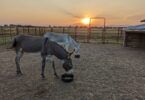Manage your horse fund without a mental breakdown
My trainer once told me that buying a horse was the cheapest aspect of horse ownership. I didn’t realize until later how right she was! Expenses add up faster than you might expect; from grain and hay to tack and bills—horses are certainly not an inexpensive hobby.
Whether you’re new to owning a horse or looking to improve your budgeting skills, learning to track your funds is invaluable. Making an equine budget is a great way to keep track of your horse-related expenses and discover areas where you can save money.
Start by making a list of all possible expenses (both recurring and one-time). Organize expenses into categories such as fixed (recurring) and variable (as needed or one-off) and by timeline (monthly? Annually? etc). Track your expenses and compare what you’re actually spending to what you expected. If you’re over budget, you may need to increase available funds or cut back on non-essential expenses.
Want to see our monthly horse expense reports, showing expenditures down to the dollar?
Horse Budgeting 101
While horses may be unpredictable, budgeting for them doesn’t have to be. Some expenses, such as routine farrier visits or annual vaccines, are a sure thing. Other bills, like an emergency vet fund, can pop up at random. It’s best to be prepared for all scenarios.
Group your expenses into categories to make analysis easier.
Consider calling out monthly, recurring expenses (board, lessons) vs annual (vet, new saddle) to make your budget more accurate.
What might be considered a “fixed” expense?
A fixed expense is one that you know you’re going to have, regardless of if the amount is the same. For example, every month your horse is going to eat hay and grain.
One month, a bale might cost $15, the next month $16. At either price, you will be buying your horse hay.
What might be considered a “variable” expense?
A variable expense is something you’re not spending money on regularly, like when you need new riding pants or a new bridle. Variable expenses can be more difficult to budget for. It can also apply to things like taking lessons or sending your horse to a trainer for a month.
I like to include emergency vet care under this category, too.
Check out our monthly horse expense reports, showing real expenditures down to the dollar.
Tools to Use
Thanks to modern technology, there are many effective ways to create a budget.
Handwritten / Binder
I enjoy making things by hand, so creating a custom budget spreadsheet and keeping it in a binder is one option. You can make the boxes and columns any size and use lots of fun colors to categorize your expenses (plus, it’s easy to mark things in as they happen).
Excel vs Google Sheets
Perhaps you’re a computer whiz and prefer to make your spreadsheet using Excel or Google Sheets. Both programs are comparable, it just depends on which you’re more comfortable with.
If you want to make changes on the go, Google Sheets may offer more flexibility since you can easily access it from your phone.
Is there an app for that?
Nowadays, there’s an app for everything, including budget spreadsheets. While there’s plenty for generic or business use, there’s also some for horsekeeping.
Tracking Your Expenses
Once you’ve made an extensive spreadsheet covering all possible expenses, it’s time to start tracking what you’re spending. I like to have one column for what I’ve budgeted and one for what I actually spend.
What if you are spending more than your budget?
One of two things happens here. You decide that you can afford to be spending what you are and adjust your budget to reflect these numbers. More likely, you decide what you’re spending isn’t sustainable.
Find areas where it’s easy to cut back without compromising quality of care.
For example, maybe you can only afford to go to three horse shows this year instead of four. Or, maybe you can hold out on buying a new pair of boots or upgrading your barn wardrobe. You might consider buying used tack instead of new.

Photo Cred: Canva
Planning for the Unexpected
Since we can’t cover our horses in bubble wrap, unexpected expenses are inevitable. There are two major categories you should have funds set aside for: end-of-life and emergency vet care.
How much should you have in an equine “rainy day” fund?
As a bare minimum, I like to have three months of board and fixed expenses set aside. This fund would also include routine vet care, the equine dentist, and farrier bills. Six months would be even better, but this is a fund you can add to a little at a time.
It’s also a good idea to have either equine insurance or a surgery fund in case of colic or serious injury.
Aim to have at least $5,000 in coverage set aside.

Photo Cred: Canva
Frequently Asked Questions
Q: How can I save money owning horses?
There are ways to save money in every aspect of horse care. If your job permits, board at a self-care facility where you provide feed and hay and clean your stall.
You can often team up with the other boarders to share duties like feeding and turn-outs.
Buy used tack when you need it. Used attire like breeches and show shirts can also save you a pretty penny. I’m a huge proponent of lessons, but when the budget is tight, you may need to go without or only take one lesson a month. Some barns offer the chance to work in exchange for decreased board.
Q: How much more expensive is it to own two horses than one?
Speaking from experience, it’s usually at least twice as expensive. Sure, some barns offer a small discount if you board multiple horses, but other services like vets, farriers, and dentists don’t. Plus, you’ll need double the emergency fund. Owning multiple horses is more feasible if you own land.
Q: Where can I find a horse budget worksheet?
We thought you might ask! You can also find one here and here.
Q: I’m not making enough money to set some aside. Should I still own a horse?
Everyone who owns a horse should have at least a small savings account set aside for unexpected or emergency expenses. If you find you’re barely making it by month-to-month, you may need to board somewhere less expensive or consider leasing your horse. The last thing you want is to discover your horse needs an operation you can’t afford because you haven’t been able to save.
Parting Thoughts
Budgeting for your horse is just as important as budgeting for anything else in your life. Don’t be surprised if, once you start tracking, you realize you’re spending more than you thought. A well-organized spreadsheet can help you keep on top of your finances and gain confidence in your ability to manage your equine budget.
P.S. Enjoy this article? Trot on over to:
- 9 Best Online Equine Courses (Care, Training, Riding)
- Horse Rookie’s Monthly Horse Expense Reports
- How Much Horses Cost & How Can You Afford One?
- Estimate Your Average Horse Cost (State by State)
- I Want a Horse But Can’t Afford One (Now What?)
- How to Ride & Show Horses Without a Trust Fund
- 7 Ways to Barter for Horse Expenses







